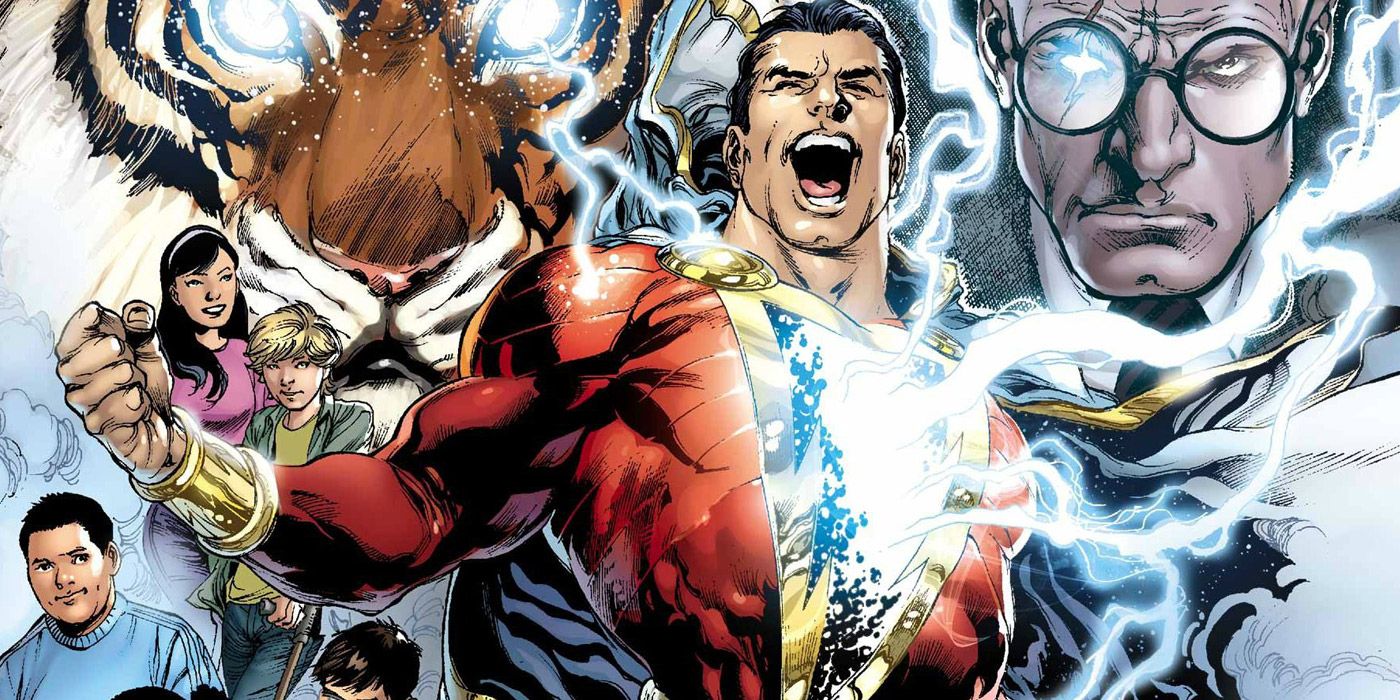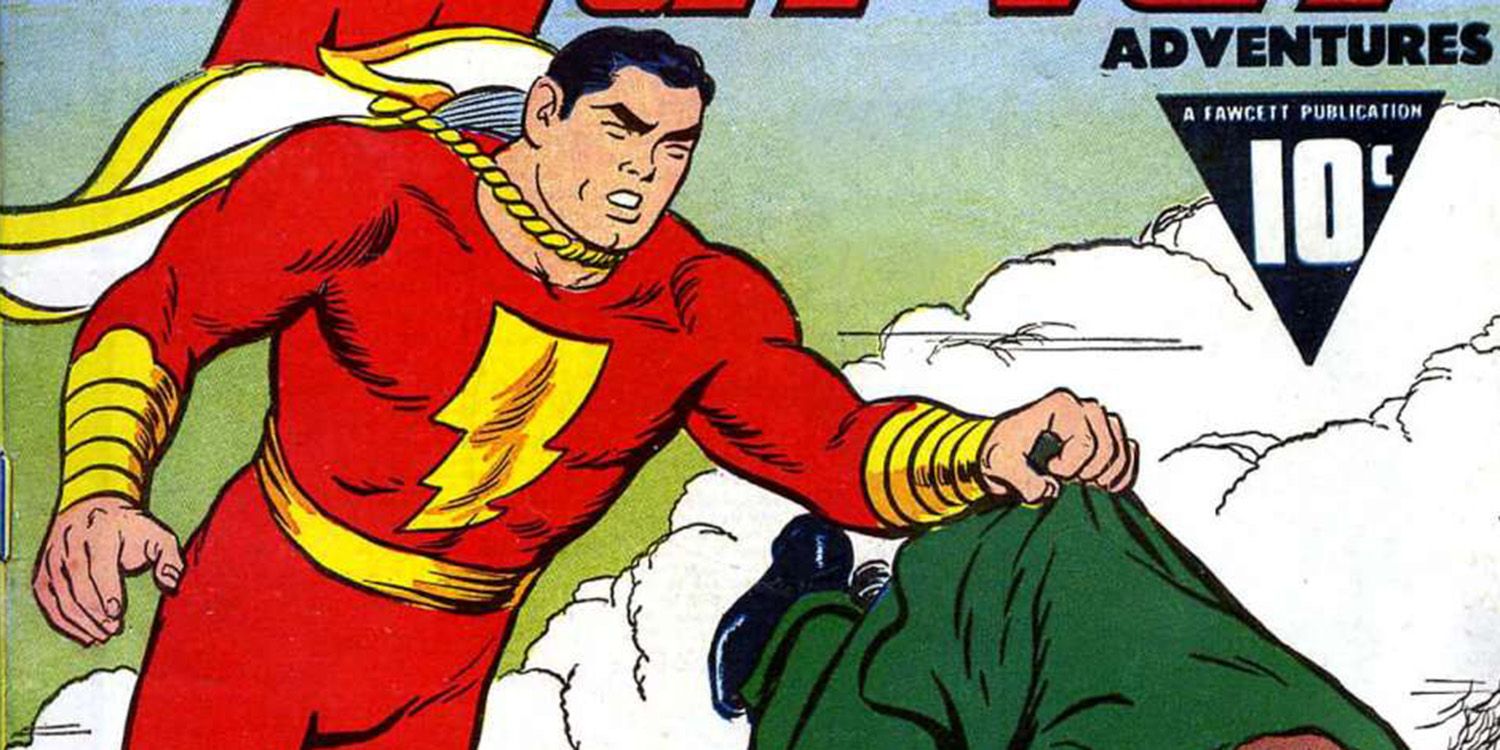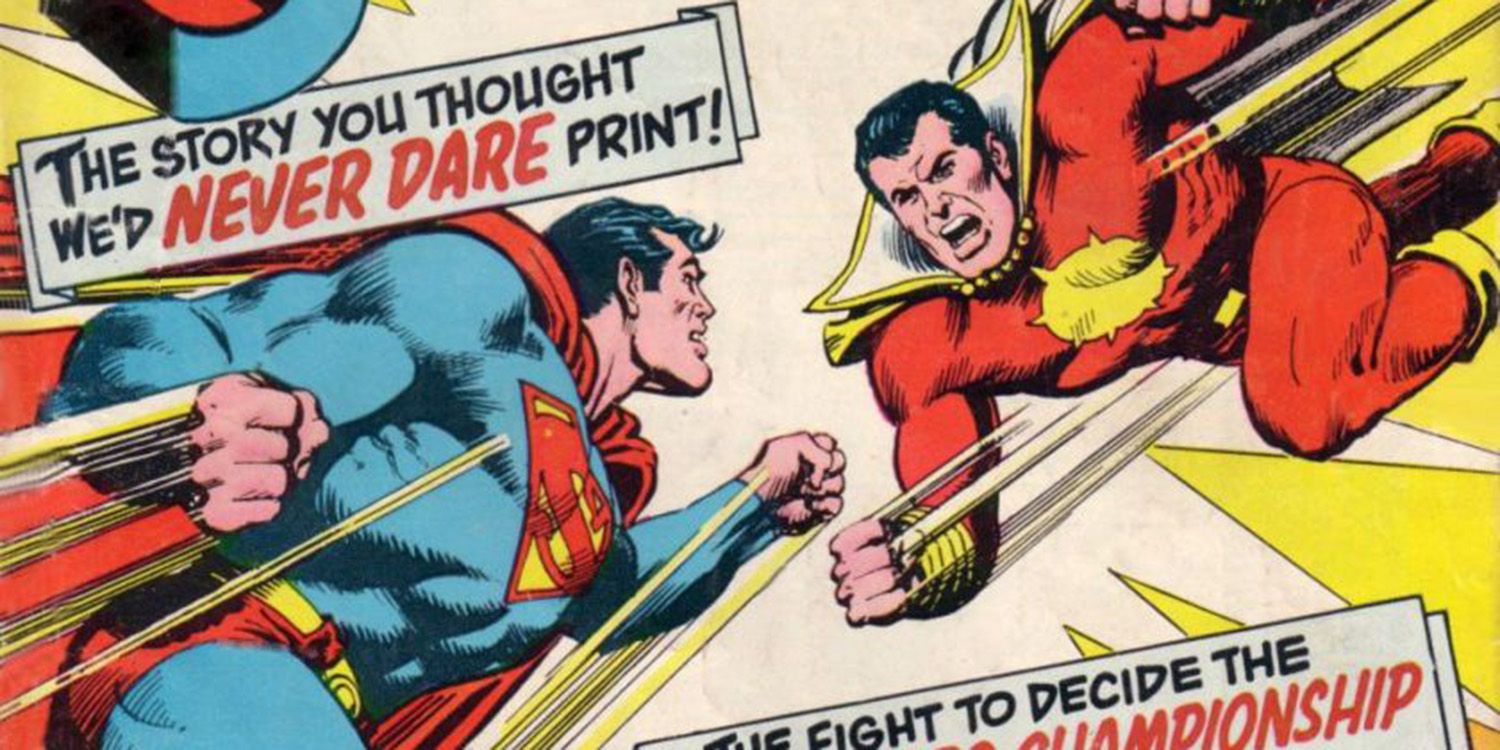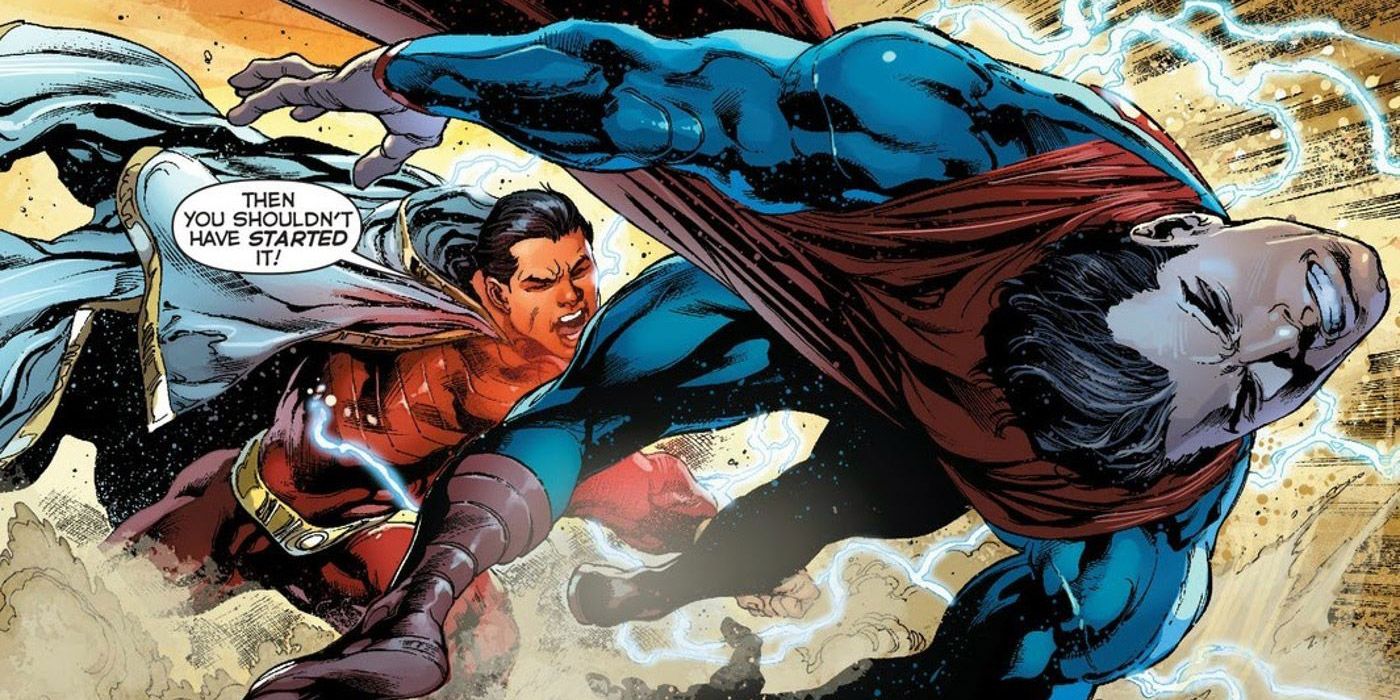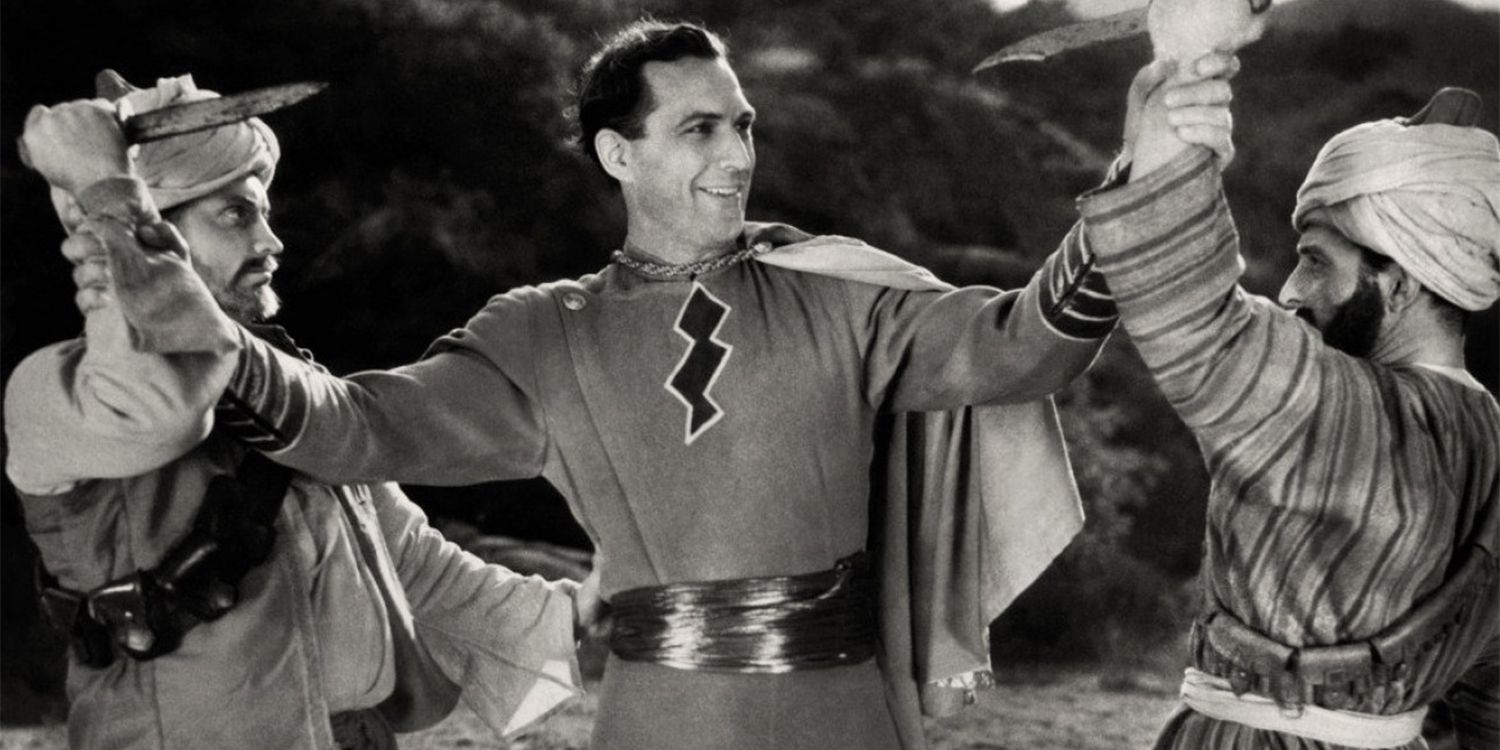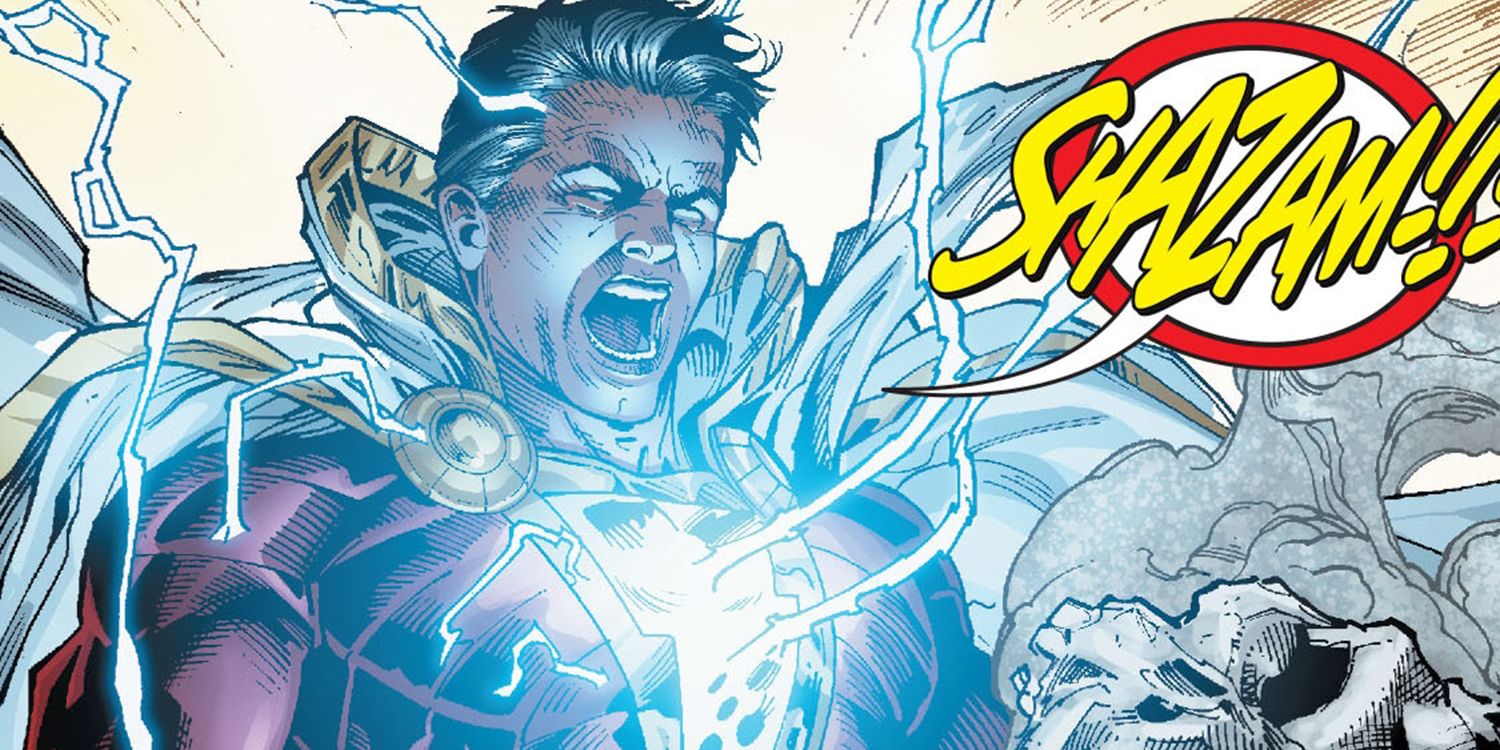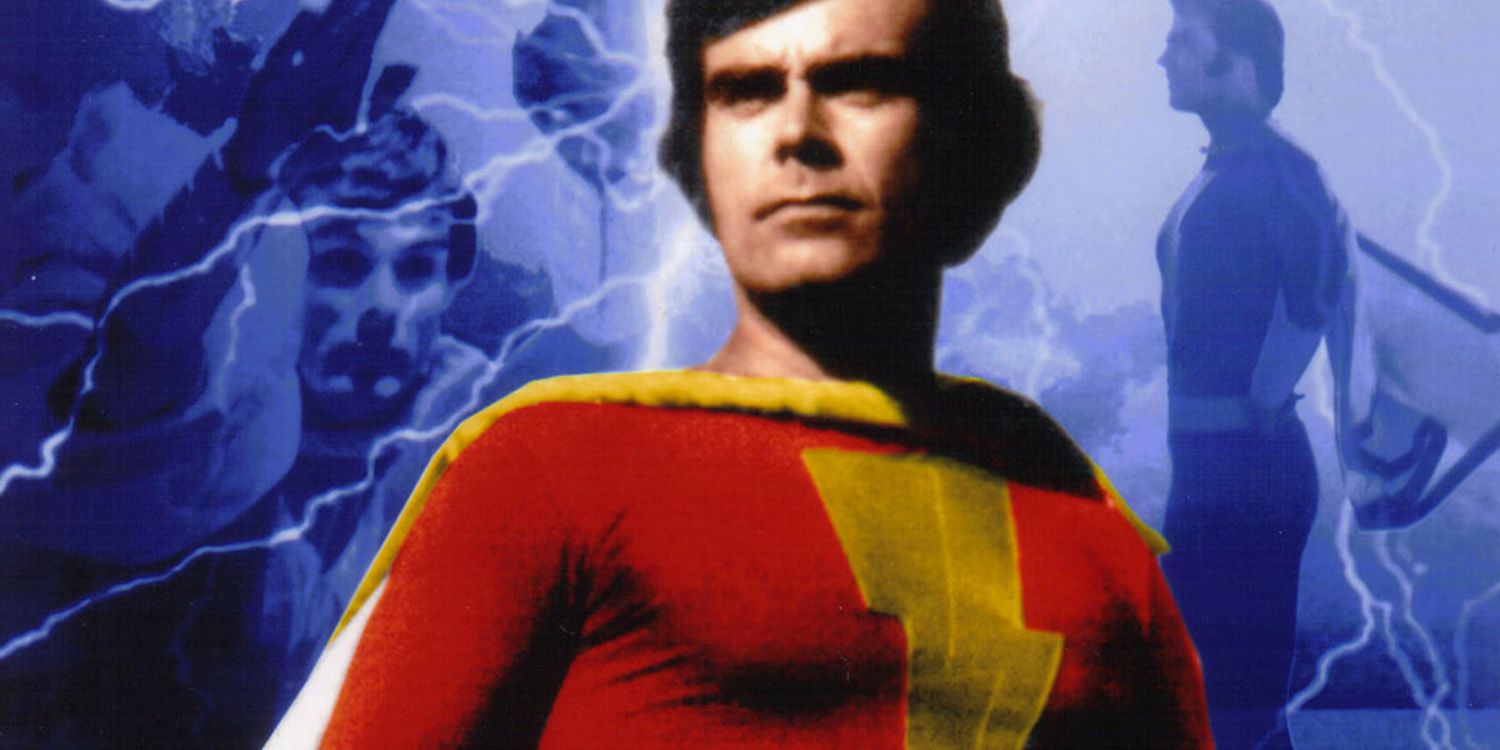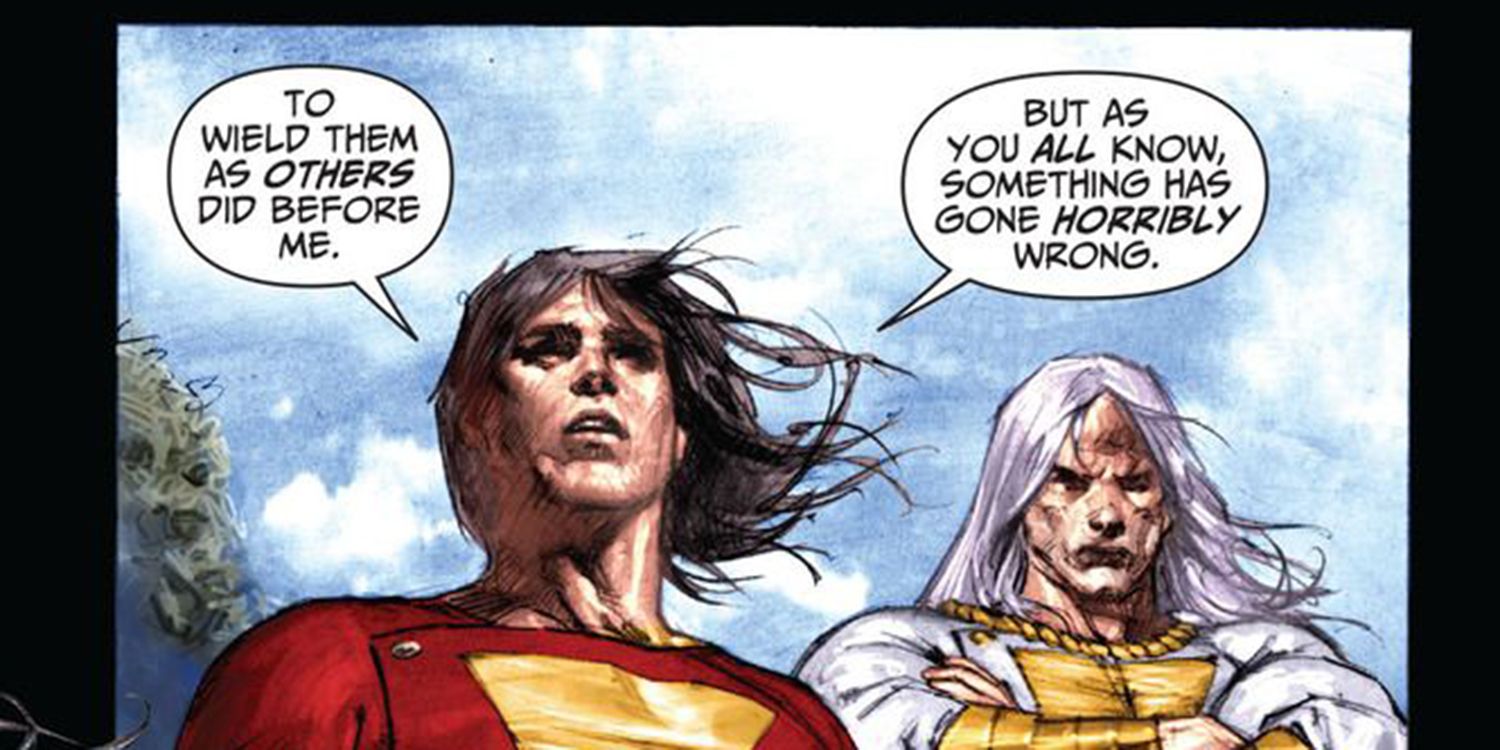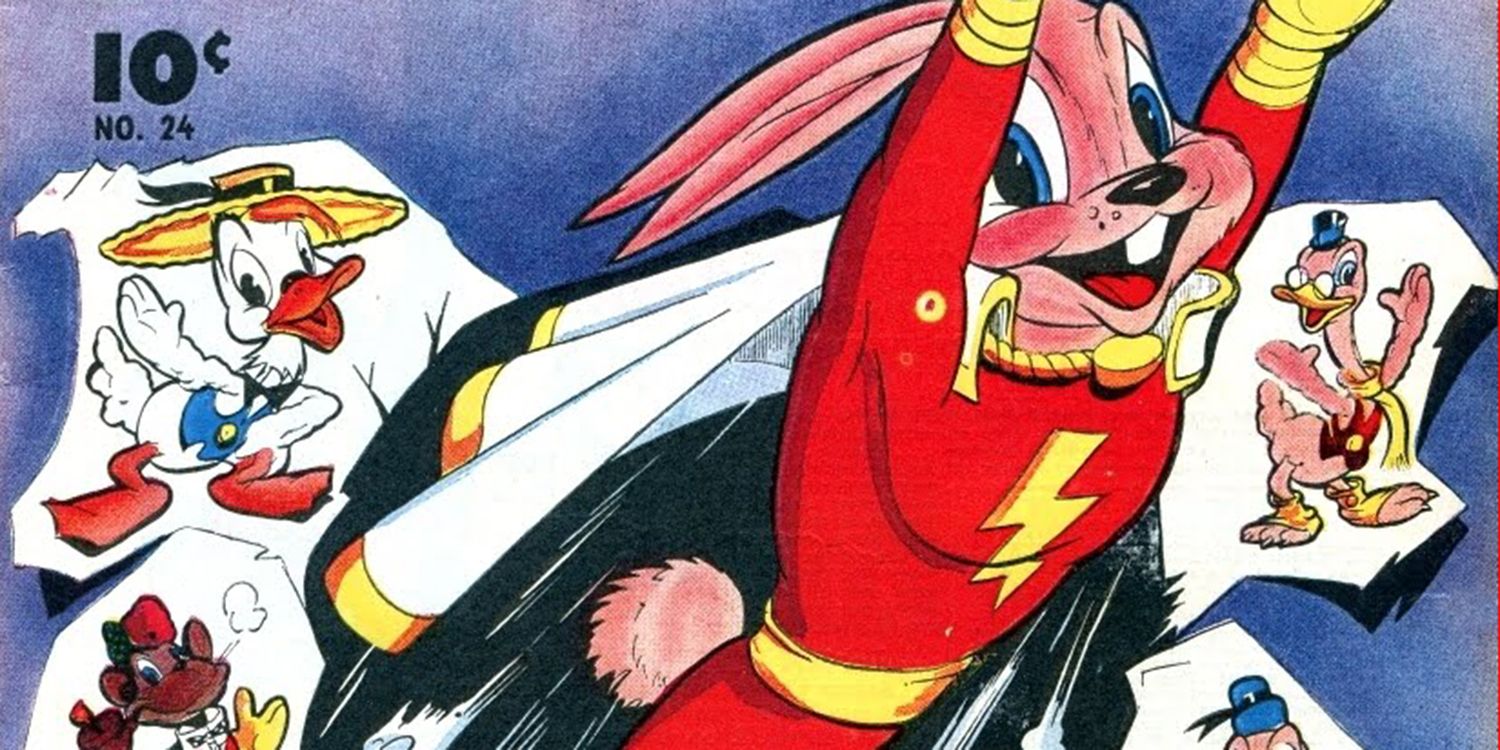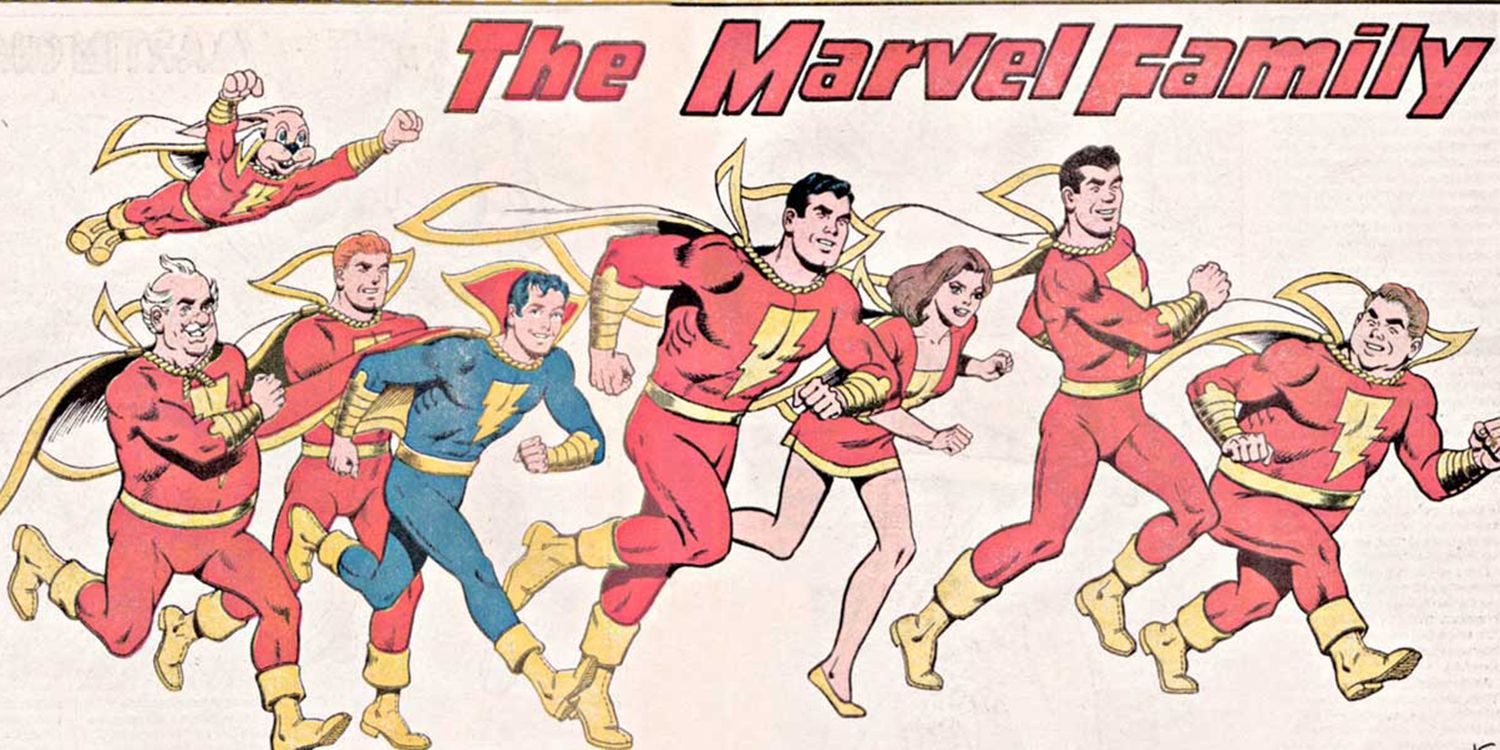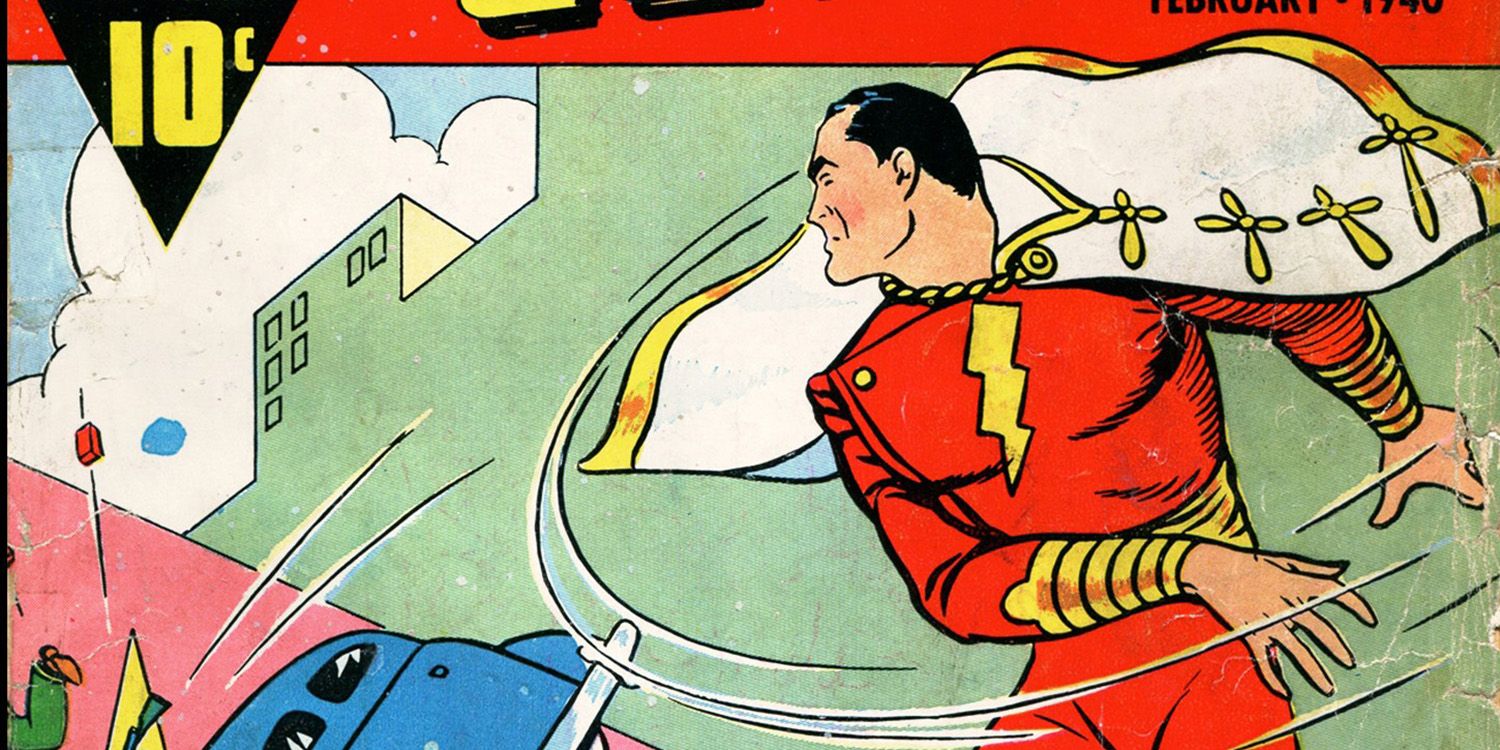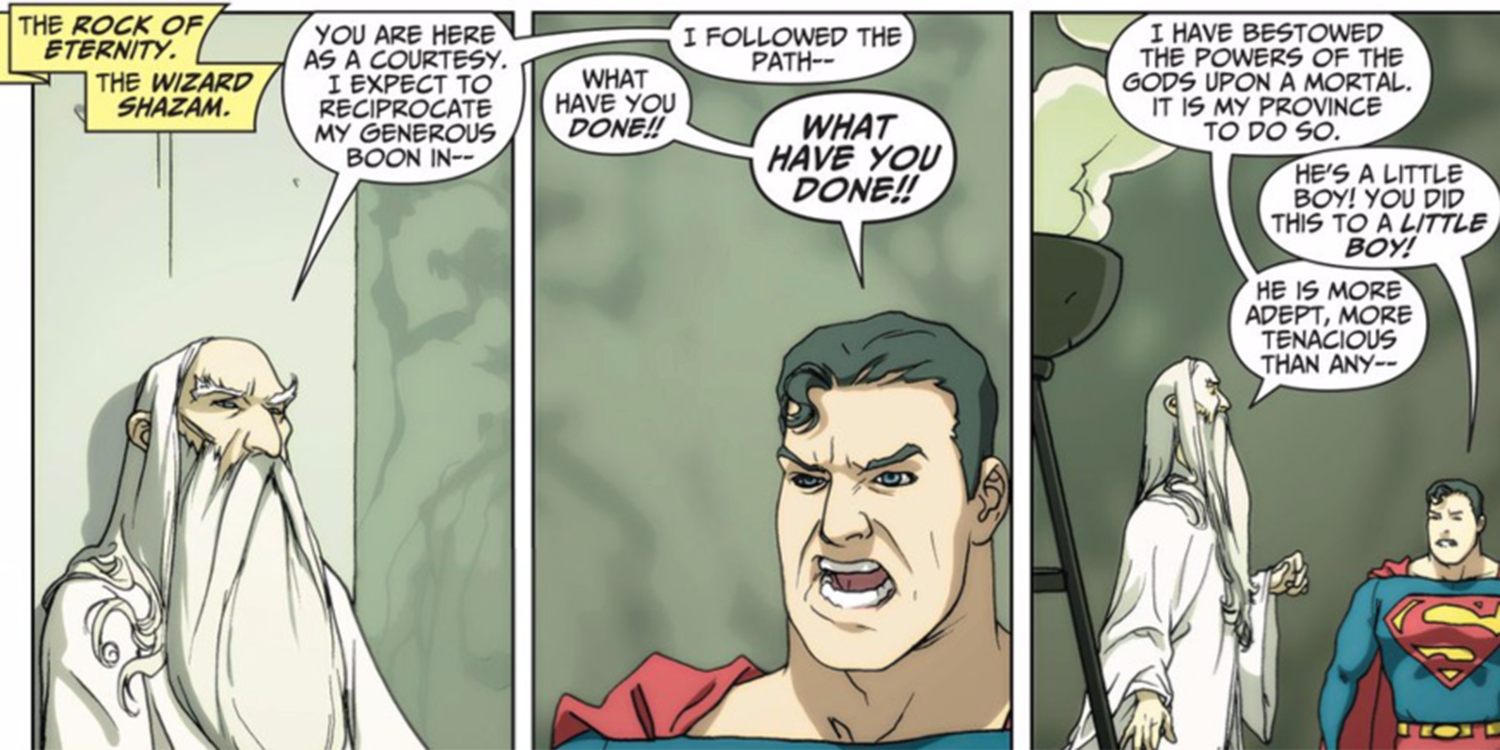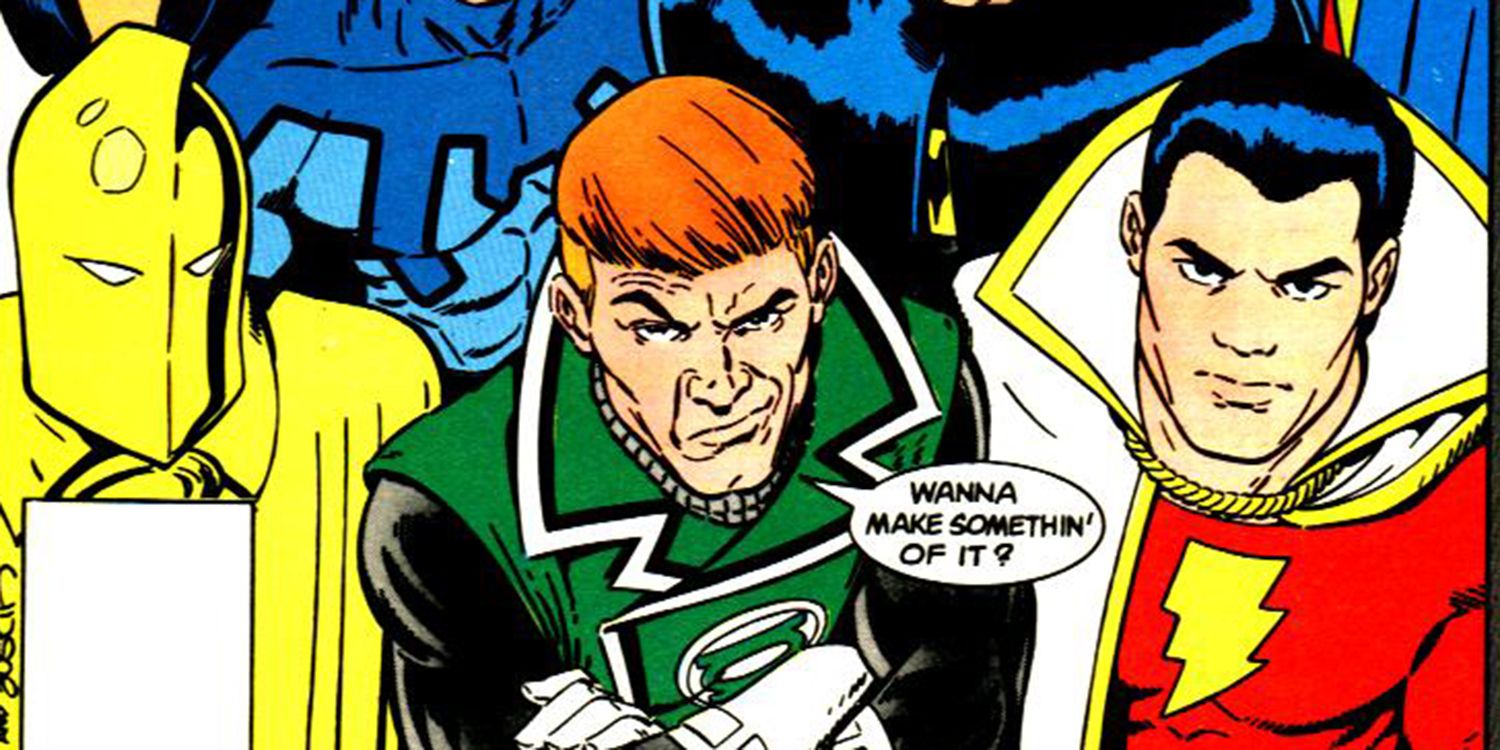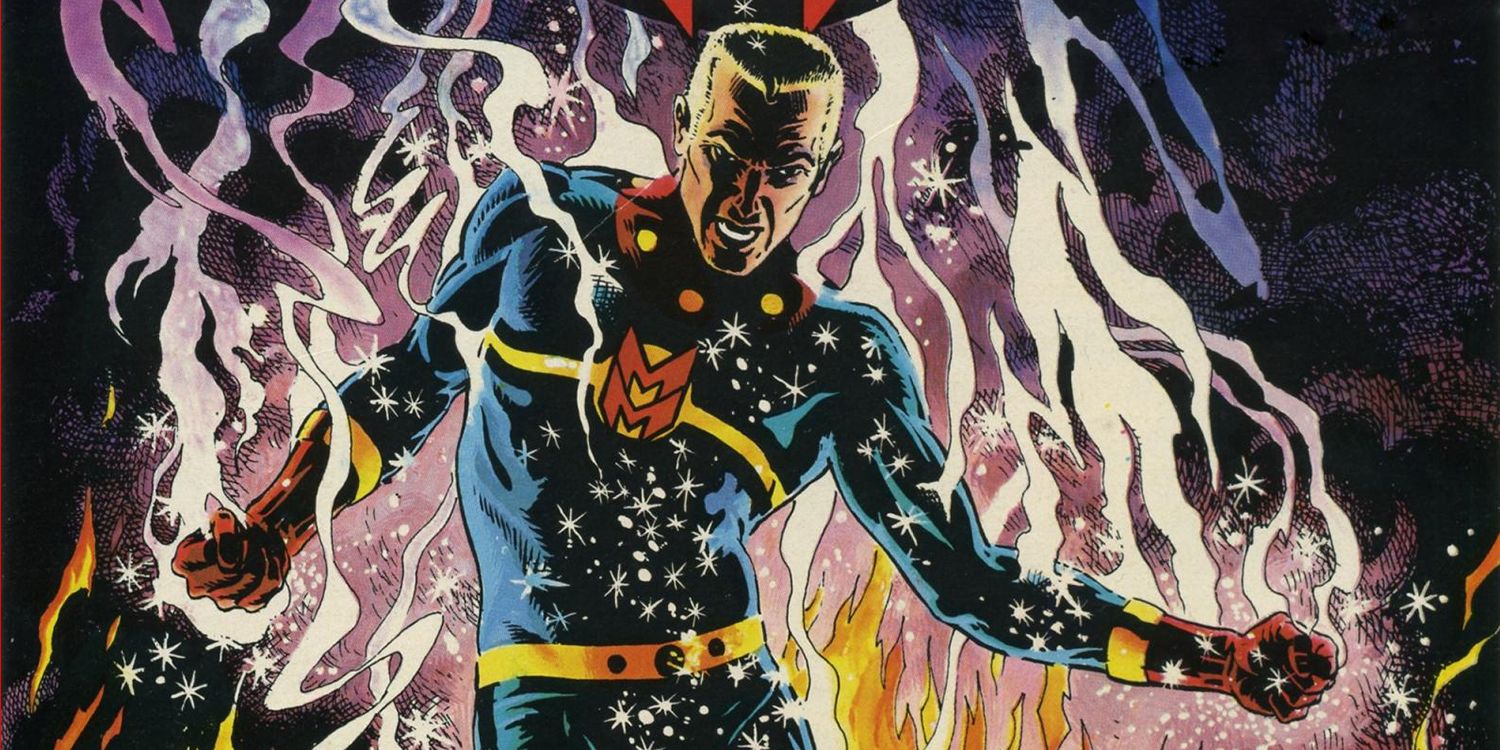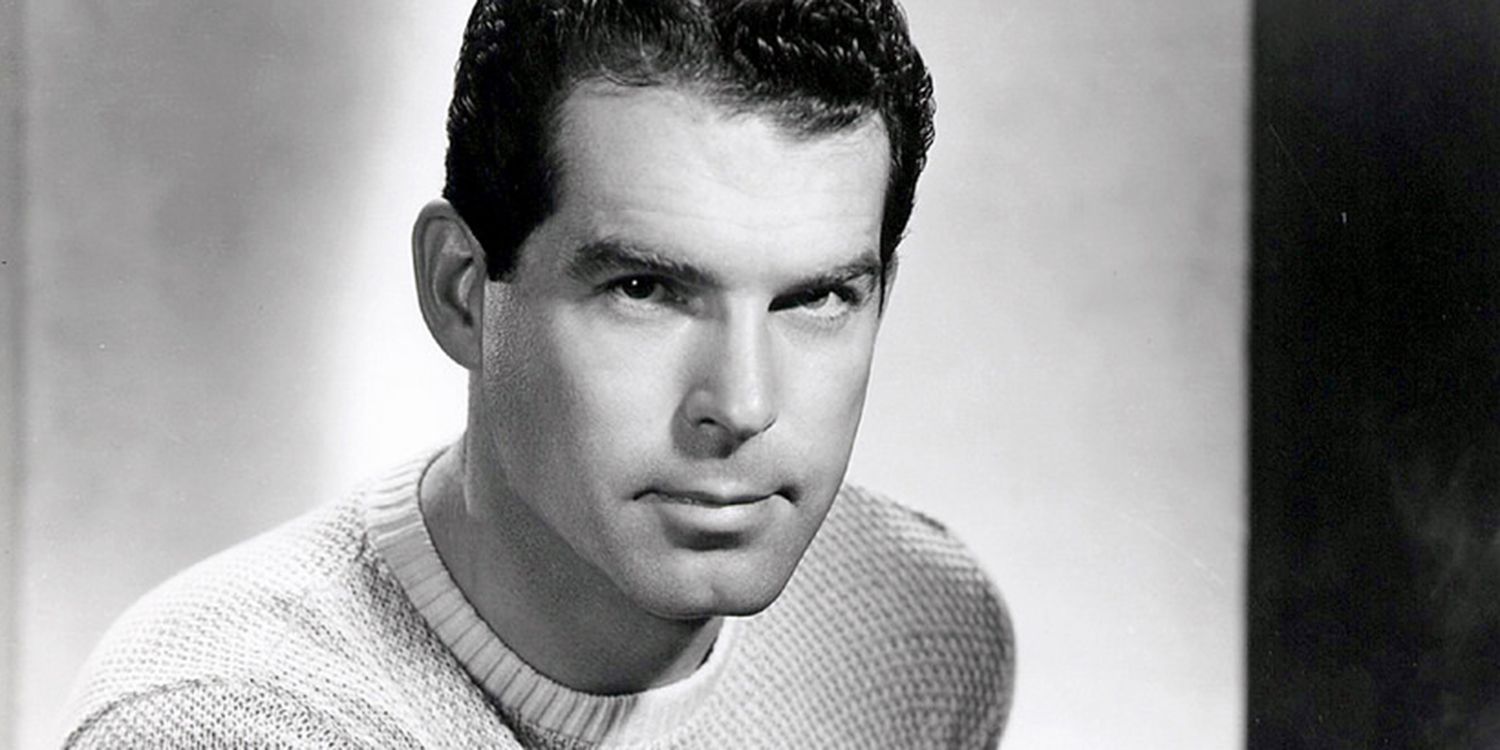The rather confusingly-named Captain Marvel, aka Shazam, aka Billy Batson is one of the strangest and most endearing figures in the DC Universe. As a holdover from Fawcett comics, a magically empowered version of Superman and the cause of more than one copyright dispute (which resulted in more than one abrupt name change)... everything about Captain Marvel is just a little off kilter.
RELATED: Black Adam: 15 Things You Must Know
However, despite his constant dance with relative obscurity, Captain Marvel’s foothold in pop culture remains strong enough to garner him buzz about a new feature film, with Dwayne “The Rock” Johnson slated to play one of his most iconic rogues, Black Adam. So with that in mind, it’s time to count down 15 facts about the "Big Red Cheese" that might surprise you.
15 CAPTAIN THUNDER
Eager to jump on the burgeoning superhero wave, Fawcett Comics set out to publish its very own answer to the likes of Superman and Batman in 1939. The original idea was to divide the powers exhibited by National’s heavy hitters into a team of six characters. However, Fawcett’s creative director, Ralph Daigh, eventually stepped in and advised that the six be condensed into one character that embodied all of the powers they were aiming for.
With this new direction in mind, creators C. C. Beck and Bill Parker developed Captain Thunder, a new hero to be published in Fawcett’s “Flash Comics” or “Thrill Comics.” Unfortunately, their naming scheme couldn’t clear copyrights and they had to switch gears, renaming Captain Thunder to Captain Marvelous (shortened to Captain Marvel by editors) and their comic to “Whiz Comics.” Captain Marvel made his official debut appearance in “Whiz Comics” #2, published in late 1939.
14 BETTER THAN SUPERMAN
One of Beck and Park’s main goals in creating Captain Marvel was to make the best looking, most interesting superhero book around. This, strangely enough, was not actually that high of a bar in 1940. The superhero craze was in its infancy and major producers were focused more on quantity rather than quality. According to Beck and Parker, early Superman and Batman comics were repetitive, muddled and difficult to read. In contrast, “Whiz Comics” offered stories that were bright, clear and inventive enough to grasp and hold audiences for the long haul.
Their hard work paid off: “Whiz Comics” #2 was an instant success, selling nearly half a million copies right out of the gate and rocketing Captain Marvel to the sort of notoriety his big blue cousin had taken the last several years to achieve. By 1944, Captain Marvel’s solo series “Captain Marvel Adventures” was outselling both “Action Comics” and “Superman.”
13 HE FOUGHT SUPERMAN(IN COURT)
Success comes with a price. National Comics was never blind to the fact that Captain Marvel was a direct copy of Superman and began taking legal action as early as 1941 by suing Fawcett comics for copyright infringement. Their case eventually went to trial in 1948, and in 1951, a judge ruled in Fawcett’s favor on the grounds that National had actually neglected to maintain its initial copyright on Superman in the first place. However, National appealed the verdict just one year later and was able to establish that its copyright was, in fact, valid.
This resulted in Fawcett Comics dissolving and canceling all of its publications in 1953. Captain Marvel was shelved for the better part of two decades until National (now rebranded as DC) licensed his rights in 1970. DC would eventually go on to completely purchase the rights to Fawcett’s entire roster of Marvel Family characters in 1980.
12 FIRST LIVE-ACTION SUPERHERO MOVIE
At the height of his popularity in 1941, Captain Marvel was given a 12 part film serial, officially making him the first comic book superhero to make the jump from page to screen. Called “The Adventures of Captain Marvel” and produced by Republic Pictures, the serial starred Tom Tyler as Captain Marvel and Frank Coghlan Jr as Billy Batson. The story pitted Captain Marvel against an original masked criminal called The Scorpion, who was intent on robbing an ancient tomb and creating a powerful weapon with a golden, scorpion-shaped artifact held within.
Strangely enough, the project was actually a reworking of Republic Picture’s failed attempt at creating a Superman serial -- a feat that would not be accomplished until 1948 by Columbia Pictures. And stranger still, original costumes from the production of “The Adventures of Captain Marvel” would later be recycled for an episode of “The Adventures of Superman” in 1951. How’s that for a never ending sibling rivalry?
11 THE MEANING OF SHAZAM!
Billy Batson’s powers are bestowed on him by saying his magic word -- “Shazam!” -- which, actually, isn’t a word at all. The letters of this acronym (yup, it's an acronym) stand for the powers Captain Marvel is imbued with, inclduing the wisdom of Solomon, the strength of Hercules, the stamina of Atlas, the power of Zeus, the courage of Achilles and the speed of Mercury.
However, that’s not all the name is meant to stand for. Captain Marvel’s long term nemesis, Black Adam, uses the same word of power to grant himself his divinely-inspired, magical abilities. His “Shazam!” stands for the strength of Shu, the swiftness of Heru, the strength of Amon, the wisdom of Zehuti, the power of Aton and the courage of Mehen. But that’s not all! In 2016’s crossover event, “Darkseid War,” the acronym’s meaning was changed to be aligned with the “old gods” of Apokolips. Their names were S’ivaa, H’ronmeer, Anapel, Zonuz, Ate and Mamaragan.
10 LIVE-ACTION TV SHOW
Capitalizing on the popularity of the live-action superhero TV show craze prompted by Batman ‘66, a live-action Captain Marvel TV show began airing on CBS in 1974. Called “Shazam!,” the show featured Michael Gray as Billy Batson, as well as Jackson Bostwick and John Davy as Captain Marvel. Les Tremayne played the show’s version of the wizard Shazam, called “Mentor” in this particular incarnation.
While it had all the pomp, circumstance and fun campiness you would expect from a trippy superhero show during the '70s, strangely enough, the show featured no super villains. Instead, Billy and Mentor rambled around the country in a motorhome, looking for wrongs to right and injustice to be corrected. The show eventually became known as “The Shazam!/Isis Hour,” and featured back-to-back adventures with another live action superhero show called “The Secrets of Isis.” The latter would later go on to become a staple of the Marvel extended family in the comics continuity.
9 HE BECAME THE WIZARD SHAZAM
As part of the build up to “Infinite Crisis,” Eclipso corrupts the Spectre and begins a war on the forces of magic in the DCU that culminates in one cataclysmic battle for the Rock of Eternity, the home of the wizard Shazam and conduit for the Marvel family’s power. The battle leaves the Rock destroyed, Shazam gone and its prisoners, the physical forms of the Seven Deadly Sins, able to roam free.
However, with the help of the Shadowpact, a cabal of magic users seeking to regain the balance Eclipso destroyed, Billy is able to help rebuild the Rock and recapture the Sins. There’s just one final problem: with the wizard still gone, the Rock is left unguarded. It’s a prison without a warden, and there’s only one logical candidate to replace him. As the new wizard, Billy gains a new look, a new name (“Marvel”), and a new job -- but is also unable to leave the Rock. During this time, Freddy Freeman takes up the mantle of Captain Marvel in place of his friend.
8 HIS ANIMAL SIDEKICKS
Debuting in “Fawcett’s Funny Animals” #1, Captain Marvel’s first animal companion was a pink anthropomorphic bunny named Hoppy the Marvel Bunny. Hoppy wore his own version of Captain Marvel’s costume, and even had his own pantheon of creatures to symbolize the “Shazam!” acronym. They were Salamander, Hogules, Antlers, Zebreus, Abalone and Monkury. Speaking his magic word would transform Hoppy into, as you might expect, Captain Marvel Bunny! No... seriously.
But Hoppy wasn’t the only quirky animal sidekick to exist in Captain Marvel’s clique. Tawky Tawny, an anthropomorphic tiger who wore clothes, could speak, and walk around on two legs was also a close friend. Tawky originally met Captain Marvel as he ended up terrorizing the public for being, well, a giant, talking tiger. That was never going to go over well, despite his best efforts to blend in. Noticing Tawky’s plight, Captain Marvel swooped in to assuage the fears of the citizens of Detroit and made himself a friend for life.
7 A BLUEPRINT FOR COMIC FAMILIES
By 1942, just two years after his original publication, Captain Marvel was given two kid sidekicks -- Captain Marvel Jr. and Mary Marvel -- who would appear next to him across almost all of his titles. Eventually, by the late 1940s, more members were added to the team’s roster and the “Marvel Family” was officially formed by way of their own self-titled ongoing comic. Noticing the Marvel Family’s overwhelming success, National Comics began trying to emulate the formula in its front runners, creating characters like Beppo the Super Monkey, Superboy, Ace the Bat Hound, Bat-Girl, and so on.
National’s success with its Marvel-modeled family units was rocky right out of the gate and the vast majority of its animal sidekicks, specifically, did not stand the test of time. Eventually, however, with the fat trimmed and the slack picked up, the groups solidified into family units DC readers still recognize today.
6 HIS LOOK
Part of Beck and Parker’s goal with their original Captain Thunder creation was to create the best looking comic book on the shelves -- and to do this, they needed a good looking leading man. Rather than turn to semi-anonymous life drawing models for their sketches, they based Captain Marvel’s facial features and build off of famous Hollywood leading men. Fred MacMurray, star of such Classic Hollywood smash hits as “Double Indemnity” and “The Apartment” was a clear influence on his face, hair, and overall styling.
As yet another well-known Hollywood hunk, Cary Grant has also been cited as an influence in their design for Captain Marvel. Both actors were not only immediately recognizable face models, but standing at a towering 6’3’’ and 6’2’’ respectively, they were the embodiment of Captain Marvel’s imposingly handsome figure as well, providing artists an easy point of reference for their hero relative to his surroundings.
5 HIS ALTER-EGO IS A CHILD
Judd Winick and Joshua Middleton's “Superman/Shazam: First Thunder” retroactively tells the tale of the first meeting of Captain Marvel and Superman, just two years after the emergence of superheroes in the DCU at large. When Captain Marvel transforms back into Billy in order to come clean about who he is to Superman, Superman’s reaction is nothing short of horrified. His first question? “Who did this to you?” Classic Superman.
When Billy isn’t able to give Superman a satisfactory answer, Clark takes his outrage directly to the wizard Shazam himself, demanding an answer for why anyone in their right mind would ever put this sort of weight and responsibility on the shoulders of a child. Shazam, instead, redirect Superman’s frustration by positing that yes, Billy may be a child, but he is a child who could “use guidance.” This inspires Superman to tell Billy his civilian name and become a mentor to Captain Marvel.
4 HE HATES GUY GARDNER
Much like Superman, Captain Marvel’s reputation as a “boy scout” precedes him. In fact, maybe even more than Big Blue, it’s widely accepted that Captain Marvel’s a pretty likable guy -- he doesn’t have many enemies in the hero community, he doesn’t step on many toes, even to acquaintances he’s known to be a pretty reliable person. That is, he's pretty popular in the community... until you ask Guy Gardner. Then the story might change a bit.
Thrust into close quarters with the formation of the new post-Crisis Justice League (the same team that would eventually become the Justice League International), Guy and Captain Marvel got on about as well as oil and water. According to Guy, Captain Marvel’s goody-two-shoes persona was as endearing as a paper cut, and he quickly bestowed upon Billy the rather disparaging nickname “Captain White Bread,” which has since stuck to Captain Marvel like the permanent smile on his perfect face.
3 HE INSPIRED MIRACLEMAN
Miracleman’s original name was actually “Marvelman” -- a mid 50s creation of British publisher L. Miller and Son. The copying of Captain Marvel for Marvelman was so blatant that Marvelman even had his own magic word -- “Kimota!” or “atomik” spelled backwards and with a k -- that transformed young Micky Moran into the flying, invulnerable superhero Marvelman. He was granted his powers not from a wizard, but an astrophysicist, in keeping with his more nuclear aesthetic.
The similarities didn’t end there, however: Marvelman even had his own “family” modeled after the Marvel Family, with Young Marvelman, instead of Captain Marvel Jr, and Kid Marvelman, a male incarnation to fill the niche Mary Marvel occupied. Eventually, Marvelman would be renamed Miracleman and taken on by Alan Moore and Neil Gaiman in the mid '80s, turning in a deconstructionist take on both the character and the superhero genre. The creators, and even the character, would go on to be some of the most famous and formative influences on the British superhero craze that crested into the early '90s.
2 BEST OF BOTH WORLDS
In the spectrum of strange secret identities, Billy Batson’s is definitely on the more awkward end of things. Being an adolescent when he’s not flying around and saving the world makes for all sorts of problems, be it just in everyday life, or trying to make meaningful connections with his superheroic cohorts. It’s a pretty unique challenge. However, Billy’s dual identity has come in handy on more than one occasion. It did so specifically during the many instances when the Earth was being threatened by magic that targets adults or children exclusively.
One great example of this was in the “Young Justice” episode, “Misplaced,” where a magic spelled created a dimensional rift between children and adults. Billy, able to qualify as either, depending on the form he took, was instrumental to solving the problem with his ability to travel back and forth between each dimension to coordinate between the two.
1 HIS FORGOTTEN RADIO SHOW
For most of the Golden Age, radio was the storytelling medium of choice, so the fact that there was a Captain Marvel radio show isn’t exactly strange. What is strange, however, is the fact that there is virtually no surviving evidence that Captain Marvel’s program ever existed at all, especially when you consider that Superman’s radio show is astonishingly well chronicled.
Captain Marvel’s radio program featured Burt Boyar as Billy Batson and was recorded in New York and Chicago, and Boyar’s account of his performance is the only concrete evidence of its existence at all. No recordings, transcripts, or documentation remain. Considering his staggering success throughout the '40s in just about every other medium, it’s ironic that the most popular and easily accessible of them would ultimately be the most forgotten. Who knew that the site of Superman’s first real victory over his original rival would not be in the comics, but over radio?
Do you know any fun Captain marvel facts we should all know? Hit us up in the comments!

